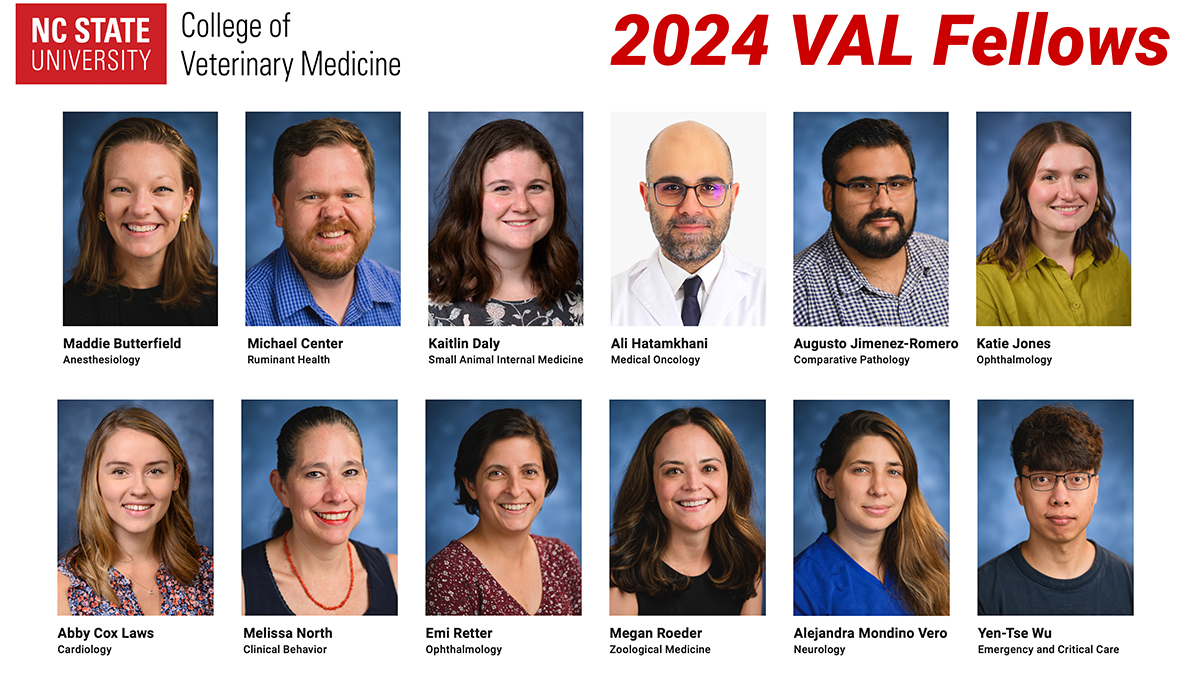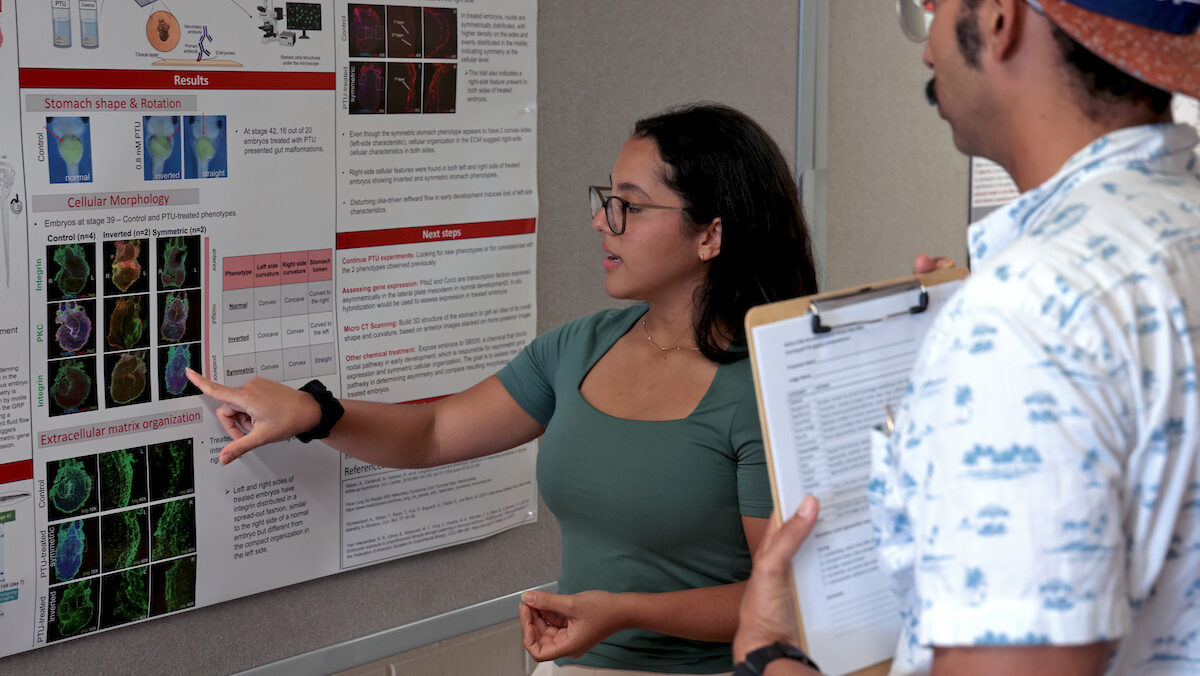CCMTR Researchers Advance Knowledge of Nervous System
Researchers from the Center for Comparative Medicine and Translational Research at North Carolina State University’s College of Veterinary Medicine have identified a gene that tells embryonic stem cells in the brain when to stop producing nerve cells called neurons. The research is a significant advance in understanding the development of the nervous system, which is essential to addressing conditions such as Parkinson’s disease, Alzheimer’s disease and other neurological disorders.
The bulk of neuron production in the central nervous system takes place before birth, and comes to a halt by birth. But scientists have identified specific regions in the core of the brain that retain stem cells into adulthood and continue to produce new neurons.
Researchers in the Center for Comparative Medicine and Translational Research (CCMTR) who were investigating the subventricular zone, one of the regions that retains stem cells, have identified a gene that acts as a switch—transforming some embryonic stem cells into adult cells that can no longer produce new neurons. The research was done using mice. These cells form a layer of cells that support adult stem cells. The gene, called FoxJ1, increases its activity near the time of birth, when neural development slows down. However, the FoxJ1 gene is not activated in most of the stem cells in the subventricular zone – where new neurons continue to be produced into adulthood.
[The resulting paper, “FoxJ1-dependent gene expression is required for differentiation of radial glia into ependymal cells and a subset of astrocytes in the postnatal brain,” is the cover article in the Nov. 11 issue of the journal Development.]
“Research into why and how some stem cells in the subventricular zone continue to produce new neurons is important because a biological understanding of how these cells function can contribute to new treatments to replace damaged or diseased brain tissue, hopefully in regions that cannot do this by themselves,” says Dr. Troy Ghashghaei, the senior author of the study who is an assistant professor of neurobiology in the CVM Department of Molecular Biomedical Sciences. “This research helps us understand brain development itself, which is key to identifying novel approaches for treatment of many neurological disorders.”
When the FoxJ1 gene is activated, it produces a protein that functions as a transcription factor. Transcription factors swim through the nucleus of a cell turning other genes on and off, turning the embryonic stem cell into an adult cell. Some of the adult cells will function as stem cells, creating new neurons, but most will not – instead serving to support the adult stem cells by forming a stem cell “niche.” This niche has a complex cellular architecture that allows adult stem cells to remain active in the subventricular zone.
Dr. Ghashghaei’s lab is now moving forward with new research to determine what activates the FoxJ1 gene and how the FoxJ1 protein regulates the expression of other genes. This understanding will reveal how the activation and inactivation of genes controlled by FoxJ1 orchestrates the development of the adult stem cell niche. Dr. Ghashghaei’s laboratory is a recent recipient of funding from the National Institutes of Health to support this line of research.
The research was co-authored by members of Dr. Ghashghaei’s CCMTR laboratory including graduate students Benoit Jacquet and Huixuan Liang, research associates Raul Salinas-Mondragon, Blair Therit andDr. Michael Dykstra, as well as a biochemistry undergraduate student Justin Buie. The work was in part a collaboration with investigators from the Cincinnati Children’s Hospital Medical Center, UNC at Chapel Hill, and Washington University in St. Louis. The paper, “FoxJ1-dependent gene expression is required for differentiation of radial glia into ependymal cells and a subset of astrocytes in the postnatal brain,” is a featured article in the current issue of the journal Development.
–Matt Shipman

Dr. Troy Ghashghaei
Authors: Benoit V. Jacquet, Raul Salinas-Mondragon, Huixuan Liang, Blair Therit, Justin D. Buie, Michael Dykstra and H. Troy Ghashghaei, North Carolina State University; Kenneth Campbell, University of Cincinnati; Lawrence E. Ostrowski, UNC-Chapel Hill; and Steven L. Brody of Washington University.
Published: Nov. 11, 2009, Development
Abstract: Neuronal specification occurs at the periventricular surface of the embryonic central nervous system. During early postnatal periods, radial glial cells in various ventricular zones of the brain differentiate into ependymal cells and astrocytes. However, mechanisms that drive this time- and cell-specific differentiation remain largely unknown. Here, we show that expression of the forkhead transcription factor FoxJ1 in mice is required for differentiation into ependymal cells and a small subset of FoxJ1+ astrocytes in the lateral ventricles, where these cells form a postnatal neural stem cell niche. Moreover, we show that a subset of FoxJ1+ cells harvested from the stem cell niche can self-renew and possess neurogenic potential. Using a transcriptome comparison of FoxJ1-null and wild-type microdissected tissue, we identified candidate genes regulated by FoxJ1 during early postnatal development. The list includes a significant number of microtubule-associated proteins, some of which form a protein complex that could regulate the transport of basal bodies to the ventricular surface of differentiating ependymal cells during FoxJ1-dependent ciliogenesis. Our results suggest that time- and cell-specific expression of FoxJ1 in the brain acts on an array of target genes to regulate the differentiation of ependymal cells and a small subset of astrocytes in the adult stem cell niche.

Cover: High-magnification confocal image of a postnatal day 21 mouse rostral migratory stream from a study that identifies a unique set of FoxJ1EGFP-expressing cells (green), some of which express the radial glia marker RC1 (red), which is distinct from mature astrocytes positive for glial fibrillary acid protein (blue).
The Center for Comparison Medicine and Translational Research is a community of more than 100 scientists from five NC State University colleges. These investigators are involved in collaborative studies with government, private, and other academic researchers to advance the knowledge and practical applications that improve the health of animals and humans.
[section_subtitle]Updated March 1, 2010[/section_subtitle]


